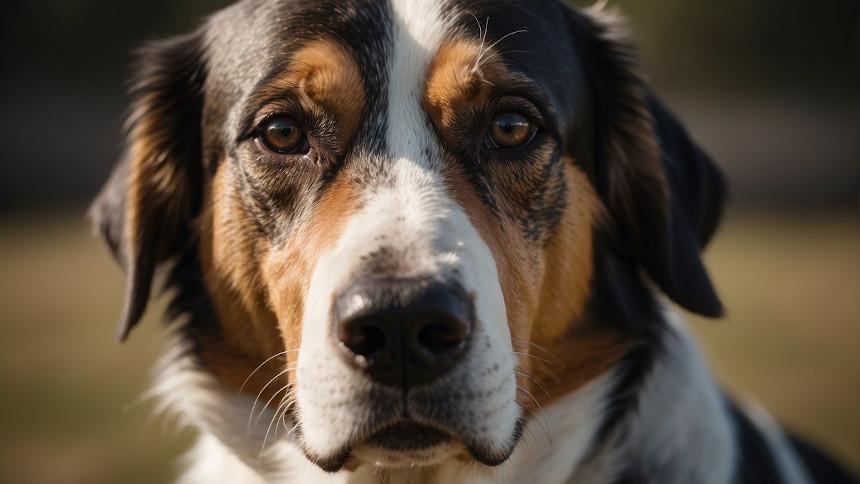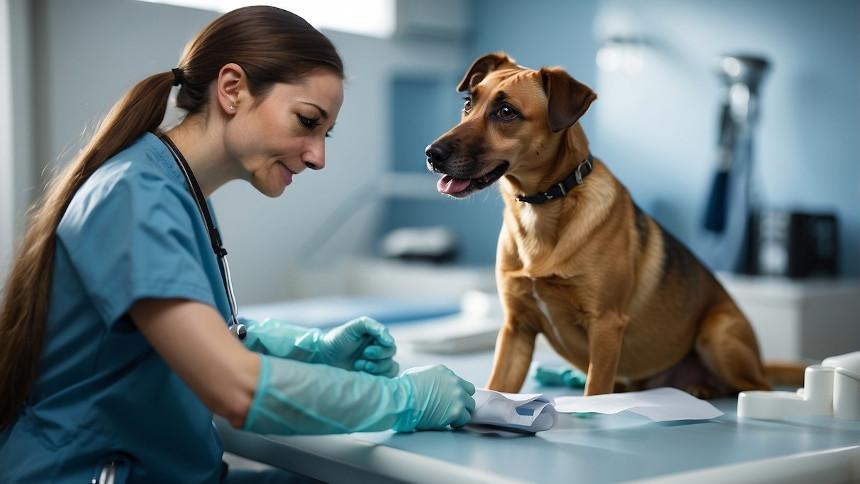Monitoring the sleeping respiratory rate of dogs is an important aspect of assessing their overall health and well-being. A dog at rest typically has a respiratory rate of between 15 to 30 breaths per minute. This rate is a crucial indicator that veterinarians and pet owners may use to detect early signs of heart issues or other underlying health problems. By counting the breaths while the dog is asleep or in a state of calm relaxation, one can ensure the measurement is not influenced by physical activity or stress.
When measuring a dog’s respiratory rate, one must observe a full respiratory cycle, which includes both the inhalation and the exhalation. It’s advisable to count the number of breaths for at least 30 seconds for accuracy, and preferably for a full minute if possible. Being equipped with this knowledge allows pet owners to identify when their dogs’ breathing patterns deviate from the norm and seek veterinary assistance promptly if necessary.
Understanding Canine Respiratory Rates
Determining if a dog’s respiratory rate is normal or abnormal is crucial for assessing its well-being, especially during restful states such as sleep.
Normal vs. Abnormal Respiratory Rates
Normal respiratory rates for dogs when resting or sleeping typically range between 15-30 breaths per minute. It is considered normal for a dog to have a lower rate at times—indicating a relaxed state—as long as there are no signs of distress or underlying health issues.
On the contrary, an abnormal respiratory rate is one that falls significantly outside the established normal range, particularly if it persists or is accompanied by other symptoms of discomfort or disease. In general:
- Rates consistently below 15 may suggest underlying conditions if coupled with other symptoms.
- Rates consistently above 30 can indicate distress or health issues, particularly if the dog shows additional signs of respiratory difficulties.
Factors Influencing Respiratory Rates
Several factors can affect a dog’s respiratory rate:
- Temperature: In hotter environments, a dog’s respiratory rate may increase as it tries to cool down through panting.
- Activity level: After exercise or vigorous play, a dog’s breathing rate will be higher as it recovers.
- Emotional state: Stress or excitement can cause temporary increases in respiratory rate.
- Health status: Medical conditions such as congestive heart failure can lead to persistent changes in respiratory rates.
It’s important for dog owners to regularly monitor their pet’s sleeping respiratory rate and to consult a veterinarian if they observe consistent abnormalities. This simple observation can be an important indicator of a dog’s cardiovascular health.
Measuring Your Dog’s Respiratory Rate
Monitoring your dog’s respiratory rate can be a simple yet effective way to keep tabs on their health. A dog’s resting or sleeping respiratory rate can indicate well-being or alert you to underlying health issues.
Methods for Monitoring at Home
Manual Count: One can measure their dog’s resting respiratory rate manually by counting the number of breaths per minute. A breath is constituted by the dog’s chest rising (inhale) and falling (exhale). It is best done when the dog is asleep or very calm. The owner should count the number of breaths for 60 seconds using a stopwatch or the second hand on a clock. The average resting respiratory rate should generally be between 15 and 30 breaths per minute for healthy dogs.
- Note: Be sure to perform this measurement when the dog is genuinely at rest.
Smartphone App: Alternatively, there are free smartphone apps designed to assist owners in recording and tracking their dog’s respiratory rate. These apps often provide a user-friendly interface for logging breath counts.
- Usage: Place the smartphone near the dog to monitor the breaths and input the data as directed by the app.
Clinical Importance of Resting Respiratory Rate
Understanding a dog’s resting respiratory rate is critical for those with heart disease or other respiratory conditions. An increase in this rate, especially over 40 breaths per minute, can be an early indicator of worsening heart failure or the development of conditions like pulmonary oedema, which necessitates immediate veterinary attention.
- Vet Communication: Regular monitoring allows owners to report precise changes to their vet, facilitating timely and accurate responses to potential health issues.
- Recording Trends: Keeping a log of respiratory rates over time can show trends that may be relevant for the vet’s assessment and treatment plans.
It is imperative for owners to be aware that a dog’s respiratory rate is a vital sign that should be observed closely, aiding in the early detection of health complications.
Health Concerns Linked to Respiratory Rates
Respiratory rates in dogs are reliable indicators of their health. Abnormalities in breathing patterns can be early warnings of underlying issues needing veterinary attention.
Signs of Respiratory Distress
Clinical signs of respiratory distress in dogs include increased respiratory rate, labored breathing, and panting. These signs should always be taken seriously as they may indicate respiratory disease or other health problems. Changes in the resting respiratory rate—typically between 15-30 breaths per minute—are noteworthy. A significant increase or decrease from this range warrants concern and prompt veterinary consultation, especially if accompanied by other symptoms such as persistent coughing, fatigue, or changes in behavior.
Congestive Heart Failure and Respiratory Rate
In the context of congestive heart failure (CHF), a dog’s respiratory rate can often offer insight into the disease’s progression and management efficacy. A resting respiratory rate over 30 breaths per minute may suggest that CHF is not well-controlled, necessitating adjustments in treatment or further evaluation. Conversely, a well-managed case should reflect a resting respiratory rate within the normal range, alongside other stable clinical signs. Owners should monitor their dogs with history of heart disease consistently and report any concerning patterns to their veterinarian immediately. Monitoring tools like respiratory rate logs can aid in tracking fluctuations over time.
Treatment and Management of Respiratory Issues
When a dog exhibits signs of respiratory distress, it’s crucial that they receive a proper diagnosis and treatment plan from a veterinarian. Treatment options typically involve a combination of medications and interventions, along with lifestyle and home care adjustments to manage the condition effectively.
Medications and Interventions
In cases of heart failure or lung disease, veterinarians may prescribe a variety of medications to help manage a dog’s respiratory issues. This often includes diuretics, which help reduce fluid accumulation in the lungs and alleviate pressure on the respiratory system.
- Diuretics:
- Furosemide (Lasix): Commonly used to treat pulmonary edema associated with heart failure.
- Bronchodilators:
- Theophylline: Relaxes the muscles in the lungs to improve breathing.
- Cough Suppressants (if coughing is present):
- Hydrocodone: Eases chronic coughing to improve comfort levels.
It’s imperative that a pet-specific drugs regimen be followed exactly as prescribed by the veterinarian, and frequent follow-ups may be necessary to adjust medications based on the dog’s response to treatment.
Lifestyle and Home Care Adjustments
Adjustments to a dog’s lifestyle and the home environment can markedly improve the quality of life for those with respiratory conditions. Pet owners are advised to:
- Monitor the dog’s Sleeping Respiratory Rate (SRR) at home to track changes and report them to their veterinarian.
- Reduce exposure to environmental stressors, such as smoke or strong fumes, that can exacerbate breathing difficulties.
- Ensure the dog maintains a healthy weight, as obesity can place additional strain on the respiratory system.
Owners may be instructed to count the number of breaths per minute while their dog is at rest, aiming for a rate between 15-30 breaths per minute. Significant deviations from this norm may indicate a need for veterinary attention.
Recognizing Emergency Situations
In assessing a dog’s sleeping respiratory rate, pet owners play a crucial role in detecting emergencies early. A healthy rate typically falls between 15-30 breaths per minute. Deviations from this range, especially when coupled with other distressing symptoms, may indicate an urgent need for medical attention.
When to Visit the Hospital
Timing is critical in responding to potential emergencies. The owner should take their dog to a veterinary hospital if they observe the following vital sign changes:
- Sleeping Respiratory Rate Above 30: More than 30 breaths per minute while the dog is relaxed or sleeping could signal distress.
- Sudden Changes in Breathing Pattern: Any abrupt shift from the dog’s normal breathing rhythm warrants a closer look by professionals.
It’s not just about the numbers; behavioral changes are equally potent indicators.
Symptoms That Require Immediate Attention
Visibility of symptoms is a clear signal for immediate veterinary help. The owner should closely monitor their dog for:
- Persistent Coughing: Unrelenting cough that disturbs the dog’s rest or occurs in fits may point to heart disease or respiratory issues.
- Weakness: Seeming inability to stand or move about with their normal vigor suggests a serious underlying condition.
- Loss of Appetite: A sudden disinterest in food can be a precursor to other more serious symptoms.
- Collapse or Fainting: If the dog collapses or faints, it is a clear emergency that requires immediate veterinary intervention.
The presence of any of these signs, especially when combined with an abnormal respiratory rate, should prompt an urgent trip to the hospital. Owners must be proactive in these situations, as timely care can make a significant difference in outcomes for the dog.
Role of Veterinary Diagnosis and Care
In veterinary medicine, accurate diagnosis and ongoing care are pivotal for the health of dogs, particularly when monitoring vital signs like the sleeping respiratory rate that may indicate underlying heart conditions.
Comprehensive Physical Exams
A veterinarian conducts physical exams to assess a dog’s overall health and to search for any signs of illness. Key vital signs, such as heart rate and breathing rate, are measured. The veterinarian may evaluate the dog’s blood pressure using non-invasive methods and inspect the animal’s physical condition, listening to the heart and lungs for any abnormalities.
Diagnostic Testing Procedures
To diagnose conditions that affect a dog’s respiratory rate while sleeping, a vet might order a range of diagnostic tests. These may include:
- Radiographs (X-rays): To visualize the heart, lungs, and chest cavity, aiding in the detection of issues like congestive heart failure.Diagnostic ToolApplicationThoracic X-rayIdentifying pulmonary edema and lung conditionsEchocardiogramAssessing heart function and structure
- Blood Work: It can help pinpoint internal medical conditions that could affect heart function or the respiratory system.
Veterinarians rely on these comprehensive exams and diagnostic tests to determine the best course of action for treatment and management of a dog’s condition. As part of ongoing care, regular follow-up and measuring the sleeping respiratory rate can be key in managing heart health.
Preventive Measures and Regular Check-Ups
Routine check-ups with a veterinarian and consistent monitoring at home are key for maintaining a pet’s health and early detection of issues like heart disease.
The Importance of Routine Veterinary Visits
Regular veterinary visits are crucial for the early detection and management of health problems in pets. Veterinarians can offer tailored advice for preventive care, identify signs of heart disease, and recommend specific interventions if necessary. For instance, they may suggest diagnostic tests if they suspect a pet’s consistent high sleeping respiratory rate indicates cardiac issues. Annual or bi-annual check-ups are recommended, but the frequency can vary based on the pet’s age, breed, and health history.
Monitoring Health Parameters at Home
Owners can play an active role in their pet’s health by monitoring vital parameters, including the sleeping respiratory rate. They should observe and record the number of times their pet’s chest rises and falls per minute during rest. An established baseline helps in identifying any significant changes. Here’s a brief guideline for owners:
- Resting Respiratory Rate: A normal range for dogs is 15-30 breaths per minute while resting or sleeping.
- Understanding Variability: Factors like recent physical activity or dreaming can temporarily alter respiratory rates.
- When to Seek Veterinary Attention: Consistent rates exceeding 30 breaths per minute warrant a veterinary evaluation to rule out possible respiratory or heart diseases.
Recording these measures regularly aids in early identification of abnormalities, reinforcing the importance of preventive measures in pet care.








